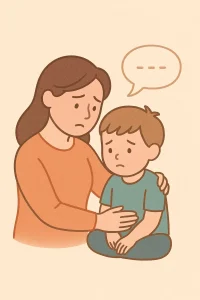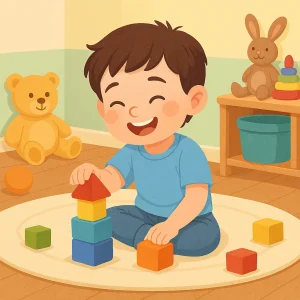Unlocking Communication: Effective Speech Therapy for Autism
By Wellness Hub
Last Updated: October 6, 2023
Imagine being unable to express your thoughts, emotions, or even your basic needs. For many children with autism, this is a daily reality. They may want to share their world with others but struggle to find the words or gestures to do so. As a parent, caregiver, or educator, this can be incredibly challenging to watch. How do you help them break through these communication barriers? Speech therapy for autism offers a solution to help children express themselves more effectively.
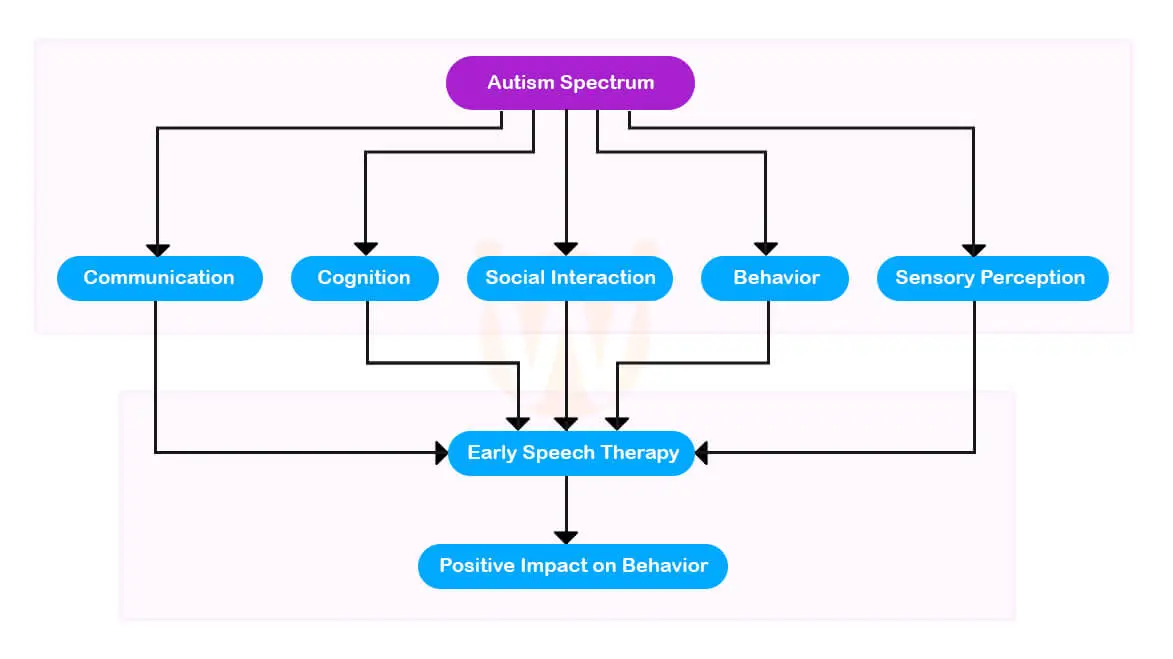
Speech therapy offers a lifeline for autistic children, providing the tools and support they need to express themselves. It’s not just about improving speech—it’s about opening doors to connection, understanding, and emotional expression. Research shows that early intervention with speech therapy can lead to significant improvements, sometimes even allowing children to manage or overcome certain symptoms of autism as they grow.
Role of a Speech Therapist
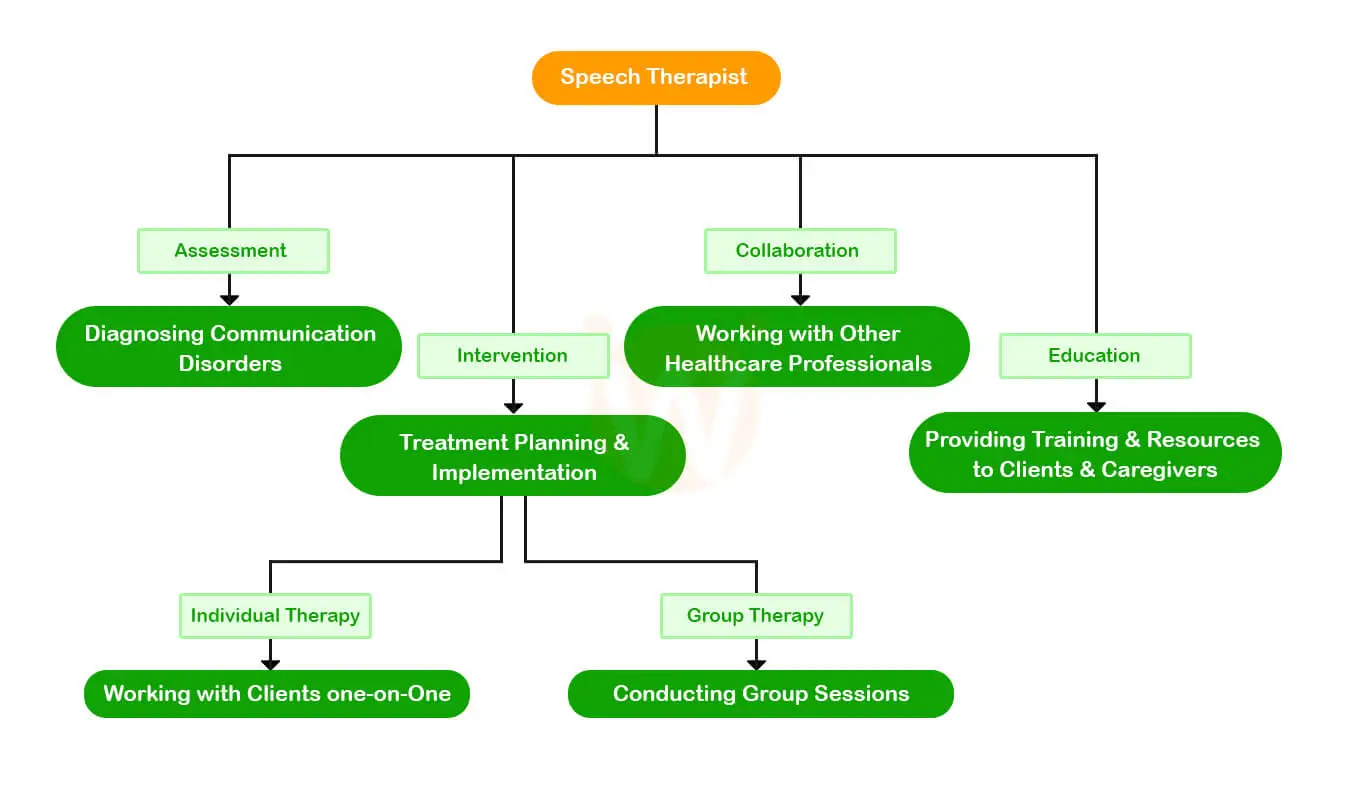
Communication is at the heart of how we navigate daily life. For children with autism, however, communication can be one of the most significant challenges. A speech therapist, or Speech and Language Pathologist (SLP), plays a crucial role in helping autistic children develop essential skills like speaking, listening, reading, and understanding language. But their job goes far beyond just teaching pronunciation. Let’s dive into how these professionals help children with autism unlock their communication potential.
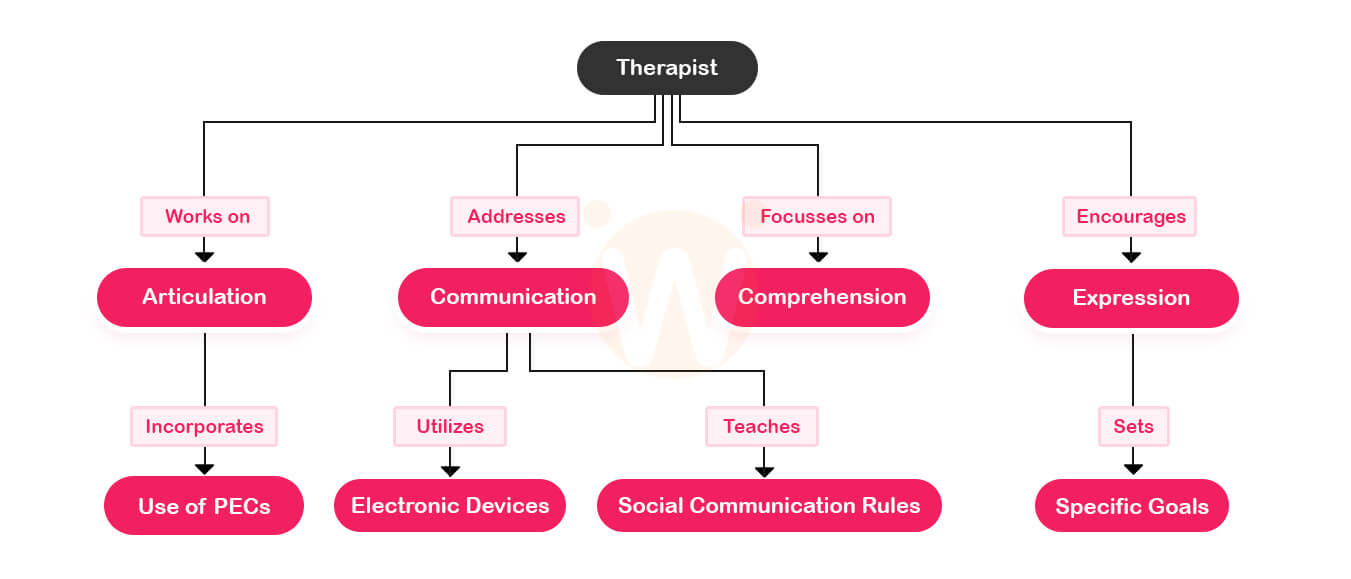
Articulation:
Articulation refers to how clearly and accurately a person can produce sounds. For many children with autism, this can be challenging. A Speech Language Pathologist helps by teaching the child how to move their mouth, tongue, and facial muscles to correctly pronounce sounds and words.
For example, if a child struggles with saying the “r” sound, the therapist might first teach them how to position their tongue and lips correctly. The process starts small—practicing the sound in isolation, then moving to syllables, words, sentences, and eventually, everyday conversation. It’s a step-by-step approach that ensures children build confidence as they master each stage.
Case Scenario: A child named Liam, who had difficulty with the “s” sound, began therapy by practicing saying “sss” while focusing on how to place his tongue. Over time, he was able to progress from saying “sss” on its own to confidently using words like “sun” and “snake” in conversation.
Also Read: Articulation Disorder in Children: Signs, Causes & Treatment
Communication
Effective communication is not just about talking—it’s about sharing ideas, feelings, and needs. For children with autism, both verbal and non-verbal communication can be challenging. A speech therapist helps them learn how to express themselves through words, gestures, and even tools like PECs (Picture Exchange Communication System) or electronic devices.
Some children may struggle with speaking, and that’s where non-verbal communication tools come in. By using PECs or other assistive devices, children can communicate their needs and thoughts without relying solely on speech. This can be a game-changer, allowing them to interact with their environment in new ways.
Example: Imagine a child who is non-verbal and struggles to ask for a snack. By using a picture of an apple from a set of PECs cards, they can point to it, signaling their request. This method helps reduce frustration and creates a smoother path for communication.
Read more: Why Consistency is Key in Online Speech Therapy for Kids
Comprehension
Comprehension is the ability to understand what others are saying, which is essential for meaningful communication. Speech therapists work on building comprehension skills through activities like following instructions, understanding stories, and making inferences.
Children with autism might have trouble processing language, making it harder for them to follow along with what is being said. Therapists often use visual aids or simplified language to help children grasp meaning more easily.
Case Scenario: Emily, a 6-year-old with autism, had difficulty understanding complex instructions. Her therapist began by giving her simple, one-step commands like, “Pick up the ball.” Over time, Emily was able to follow more complex instructions, such as “Pick up the ball and put it on the table.”
Expression
Being able to express thoughts, ideas, and emotions is vital for any child. Speech therapists work with children to improve their ability to convey what they want to say, focusing on vocabulary, grammar, and sentence structure.
For example, some children might struggle to put together sentences. A therapist might start by teaching them to form simple sentences, like “I want juice,” and gradually build toward more complex expressions.
Example: A child named Jake used to communicate only with single words like “juice” or “ball.” With speech therapy, he learned to string together full sentences like “I want to play with the ball,” which made it easier for those around him to understand his needs.
Usage of Speech Pragmatics
Speech pragmatics refers to the social rules of conversation. This can be one of the trickiest areas for children with autism to master, as it involves not just talking, but understanding how conversations work—like knowing when to take turns, maintaining eye contact, or staying on topic.
A speech therapist teaches these subtle social rules, helping children learn how to interact appropriately in different situations. This is especially important as children grow older and begin interacting more with peers.
Example: A child may struggle with interrupting others during conversations. Through role-playing exercises, a therapist can teach them the importance of waiting for their turn to speak, improving their ability to engage in conversations with friends and family.
Conversation
Having a successful conversation involves much more than just speaking—it includes listening, staying on topic, and responding appropriately. Speech therapists work on these conversational skills, helping children learn how to navigate interactions with others.
For example, a therapist might use role-playing scenarios to teach a child how to start a conversation, maintain it by asking questions, and respond to the other person’s comments.
Case Scenario: Oliver used to have difficulty maintaining a conversation. He would often switch topics abruptly or stop responding entirely. With therapy, he learned to ask follow-up questions and stay engaged in conversations with his peers, improving his social relationships.
Conceptualization
Understanding basic concepts like big and small, right and left, or colors and shapes is crucial for language development. Speech therapists introduce these ideas in a fun and interactive way, ensuring that children with autism grasp these essential concepts, which are often foundational to understanding and communicating about the world around them.
Example: In therapy, Sophia practiced identifying objects as “big” or “small” by sorting toys into different boxes. This helped her better understand size comparisons and improved her ability to describe objects during play.
Know more about How Flashcards and First Words Games Aid Language Acquisition
Benefits of Speech Therapy for Children with Autism
| Benefit | Elaboration |
| Improved Speech | Speech therapy helps children learn to pronounce words more clearly by focusing on the mechanics of speech, such as mouth, tongue, and facial movements. This leads to better articulation, helping them express themselves more clearly in daily life. It also includes exercises that strengthen the muscles needed for clear speech. |
| Non-Verbal Communication | For children who are non-verbal or have limited verbal skills, speech therapists introduce alternative communication methods such as gestures, PECs (Picture Exchange Communication System), and speech-generating devices. These tools allow children to express their needs and thoughts without relying solely on spoken words. |
| Enhanced Comprehension | Comprehension is a critical part of communication, and speech therapy helps children understand language more effectively. Therapists use techniques like breaking down instructions, using visual aids, and simplifying language to help children grasp meaning and follow along in conversations. This helps them process and respond appropriately to others. |
| Better Social Interaction | Speech therapy also focuses on the social aspects of communication, teaching children how to take turns, ask questions, and stay on topic during conversations. These skills help them engage with their peers, family members, and teachers, improving their ability to build social relationships and feel more connected. |
| Increased Confidence | As children progress in speech therapy and become more adept at communicating, their confidence naturally grows. Being able to express thoughts, feelings, and needs allows them to participate more fully in social situations, which boosts their self-esteem and encourages further progress. |
Home-based Speech therapy activities

Parents and caregivers play a big role in helping their children improve communication skills, especially when working alongside speech therapists. By adding 5 to 10 minutes of simple, fun activities into daily routines, you can help your child practice and reinforce what they learn during speech therapy sessions. The key is to keep things short, interesting, and enjoyable. Here are some easy activities that can help your child with autism build their communication skills at home.
Engage in Playful Activities
Children with autism respond best when they’re having fun. Use their favorite toys, games, or activities to make practicing communication more enjoyable. Whether it’s playing with dolls, action figures, or simple games, using these moments to work on language can make a big difference.
Example: If your child loves toy cars, you can encourage them to say, “I want the red car,” or “Give me the blue car,” helping them practice words while playing.
Gaining Attention for Imitation
Imitation is a key skill that helps children learn language. To help your child pay attention and copy your actions or words, try these simple tips:
- Slow down and make your actions clear and easy to follow.
- Use a fun voice or make silly sounds to grab their attention.
- Turn it into a game, like copying each other’s funny faces or clapping hands.
Example: You can say, “Let’s make funny faces!” and see if your child copies you. This helps build imitation skills, which are important for learning to speak.
Teach Essential Words
Start with simple words that your child can use daily, like “more,” “help,” “stop,” and “please.” Practice these words during normal activities to make learning easier and more natural.
Example: At snack time, ask, “Do you want an apple or crackers?” This helps your child practice using words to make choices.
Give Choices
Offering choices during play or routine activities encourages your child to communicate. Rather than giving them a toy or snack automatically, ask them to choose between two options.
Example: When dressing your child, you could say, “Do you want the blue shirt or the red shirt?” This gives your child a chance to practice using words or gestures to communicate their choice.
Positive Reinforcement
When your child tries to communicate or imitates a word or action, praise them! Positive reinforcement encourages them to keep trying and builds confidence.
Example: If your child says a new word like “juice,” you can say, “Great job saying juice!” or give them a high-five. This makes them feel good about their effort.
Follow the Child’s Lead
Sometimes, it’s best to follow your child’s interests. If they’re really focused on a toy or activity, use that moment to introduce new words or sounds.
Example: If your child is playing with a toy train, you can teach words like “train,” “fast,” or “slow,” helping them learn while playing.
Sorting Games
Sorting games can teach your child important concepts like colors, sizes, or shapes, while also working on communication. Ask them to sort items and describe what they’re doing.
Example: Use colorful blocks and say, “Let’s put the red blocks here and the blue blocks there.” This helps them learn colors while practicing communication.
Read Stories Together
Reading is a great way to improve language skills. Choose simple, colorful books, and ask your child to point to pictures or repeat words.
Example: While reading a book about animals, you can ask, “Where’s the cat?” and encourage your child to point to the picture or say the word “cat.”
Sensory Activities
Children with autism often enjoy sensory play, and these activities can help with communication too. Playing with sand, water, or textured toys gives you a chance to talk about what they’re feeling and doing.
Example: If your child is playing with playdough, ask them, “Is it soft or hard?” or “What are you making?” This helps build vocabulary in a fun way.
Communication Boards
For children who have difficulty speaking, communication boards with pictures can help them express their needs. They can point to images to show what they want or how they feel.
Example: If your child is non-verbal and wants a snack, they can point to a picture of an apple on a communication board. This helps them communicate without words.
Show Facial Expressions
Facial expressions are another way to communicate. Encourage your child to imitate your happy, sad, or surprised face. This helps them recognize and express emotions better.
Example: Make it fun by saying, “Show me your happy face!” and smile. Then, ask for a “surprised face” and exaggerate the expression. This helps your child understand different emotions.
How does our Speech Therapy differ from others?
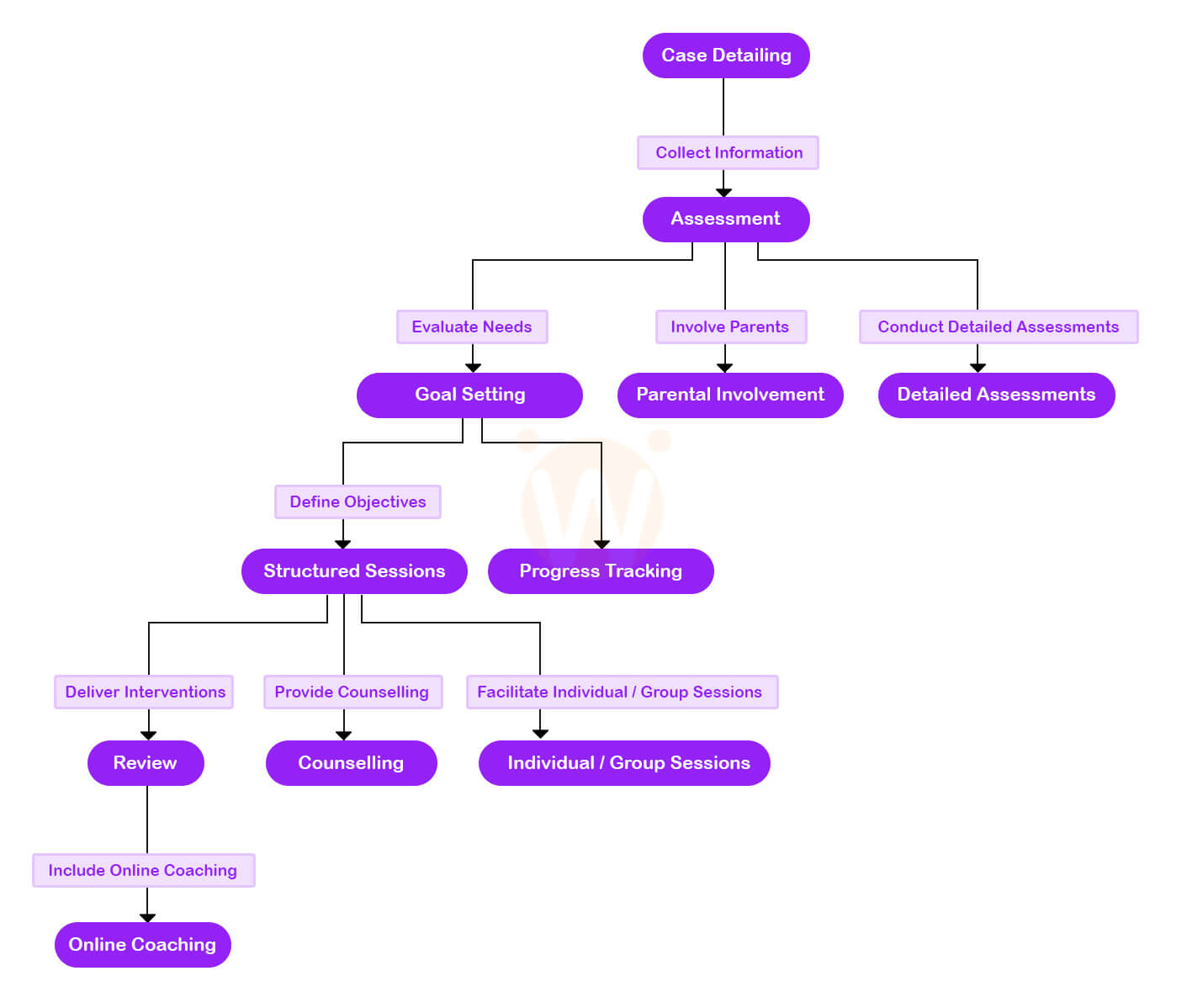
At Wellness Hub, we take a personalized and structured approach to speech therapy, ensuring each child’s unique needs are addressed with care and precision. Here’s what sets us apart:
Systematic Approach from Start to Finish
From the very first session, we follow a systematic procedure. It begins with detailed case assessments to understand your child’s specific speech challenges. After this, clear goals are set, and a tailored therapy plan is designed. This plan isn’t just about tackling the symptoms; it’s about focusing on long-term communication success.
Example: If a child struggles with articulation, we don’t just work on sounds in isolation. We look at the bigger picture—why is the child having difficulty? What environmental factors could be influencing this? We assess the whole picture before diving into therapy.
Flexible Session Timings
We know life can be busy. That’s why we offer flexible session timings based on what suits your schedule. Whether you need morning or evening slots, our therapists ensure that therapy fits into your routine, not the other way around. And every three months, we conduct a thorough review to measure progress and adjust goals as needed.
Example: A parent with a full-time job might struggle to find therapy that fits around work hours. At Wellness Hub, sessions can be scheduled for evenings, making it easier for families to stay consistent without the added stress of rearranging their lives.
Our Specializations include
At Wellness Hub, we focus on making speech therapy a collaborative process, involving both parents and therapists to support your child’s development. Here’s how we stand out:
Parental Involvement
Parents play a vital role in their child’s progress, and we ensure you are actively involved in the therapy journey.
- Counseling about developmental disorders: We explain your child’s specific speech challenges in simple terms, helping you understand the issues and how therapy will help.
- Planning therapy with parents: Together, we set realistic therapy goals that are tailored to your child’s needs.
- Home training programs: We provide clear, easy-to-follow programs that parents can use to help their child practice speech skills at home.
- Practical tips for home practice: We give you simple strategies to use during everyday activities, making it easier to practice speech in a natural, fun way.
- Creating therapy materials: We guide you on how to create useful tools, like flashcards, to support your child’s learning during home practice.
Example: After a therapy session focused on improving pronunciation, you might be given a set of picture cards to use at home. You can spend just a few minutes each day helping your child practice saying the words associated with the pictures.
Read more: Navigating Speech Therapy: A Guide for Parents
Detailed Assessments
Our detailed assessments help us understand your child’s speech challenges and create a personalized therapy plan.
- Speech sound errors: We evaluate how well your child pronounces different sounds and identify which areas need improvement.
- Oro-facial examination: We check the muscles in your child’s face and mouth to ensure there are no physical issues affecting their speech.
- Oral motor function screening: We assess how well your child can move their lips, tongue, and jaw, which are important for clear speech.
- Language comprehension and production: We evaluate how well your child understands language and how effectively they can express themselves.
- Identifying the severity of the issue: We determine how serious your child’s speech problem is and plan therapy accordingly.
- Stress management counseling: We provide support to help your child and your family manage any stress related to the speech difficulties.
- Individual and group sessions: Depending on your child’s needs, we offer both one-on-one therapy sessions and group settings to build social communication skills.
Case Scenario: After assessing a child’s oral motor skills, we may discover that difficulty moving the tongue is affecting their ability to pronounce certain sounds. The therapist then designs fun exercises, like blowing bubbles or using a straw, to help strengthen those muscles.
Online Speech Therapy
Online speech therapy is a convenient and effective option, especially when parents are involved in the process. With clear guidance and regular practice, children can make excellent progress even through virtual sessions.
- Parental support during online sessions: Parents play a key role by helping their child follow the therapist’s instructions and ensuring that exercises are completed correctly.
- Ongoing therapist support: Even after the session, our therapists are available to guide you and answer any questions you may have. With licensed and experienced therapists, Wellness Hub is committed to providing the support you need throughout your child’s therapy journey.
Example: During an online session, the therapist may ask you to help your child practice a specific sound using their favorite toy. You’ll receive real-time guidance on how to assist, and after the session, the therapist may suggest additional ways to practice at home.
Conclusion:
Speech therapy is a powerful tool for helping children with autism break through communication barriers. With early intervention and the right strategies, children can improve their ability to express themselves, connect with others, and build essential life skills. At Wellness Hub, we offer personalized, flexible therapy plans and ongoing support to ensure your child gets the best care possible. Whether it’s in-person or online, our team is here to guide you every step of the way.
Frequently Asked Questions:
1. What is speech therapy for autism?
Speech therapy helps children with autism improve their communication skills, both verbal and non-verbal. It focuses on teaching them how to express their needs, emotions, and thoughts effectively.
2. How does speech therapy benefit a child with autism?
Speech therapy helps children with autism improve their ability to speak, understand language, and use non-verbal communication like gestures. It also enhances their social skills and builds confidence.
3. What age should a child with autism start speech therapy?
Early intervention is key, so starting speech therapy as soon as communication difficulties are noticed can be very effective. Most experts recommend starting as young as 2 to 3 years old.
4. Can speech therapy help a non-verbal child with autism?
Yes, speech therapy can help non-verbal children with autism communicate through alternative methods like Picture Exchange Communication Systems (PECS), sign language, or electronic devices.
5. How often should a child with autism attend speech therapy?
The frequency depends on the child’s needs. Many children benefit from 2-3 sessions per week, but the exact plan will be tailored by the speech therapist based on progress and goals.
6. What are some home-based speech therapy activities for children with autism?
Parents can help by using fun, simple activities like reading stories, using picture cards, giving choices during play, and encouraging their child to imitate sounds and words during daily routines.
7. How do speech therapists teach children with autism to speak?
Speech therapists use techniques like articulation exercises, visual aids, and games to help children learn how to form words and sentences. They also teach non-verbal communication skills when needed.
8. Can online speech therapy be effective for children with autism?
Yes, online speech therapy can be very effective, especially when parents are involved in the process. Therapists provide guidance, and parents can help children practice during and after sessions.
9. What are the signs my child may need speech therapy for autism?
If your child struggles with speaking, understanding language, forming sentences, or using gestures, it may be time to consider speech therapy. Delayed speech or lack of eye contact are common signs.
10. How can parents support speech therapy at home for children with autism?
Parents can support speech therapy by practicing speech exercises at home, using visual aids, and incorporating communication into everyday activities. Consistency is key to reinforcing what’s learned in therapy.
About the Author:
Rajini Darugupally
M.Sc., Speech-Language Pathologist (9+ years of experience)
Rajini is a passionate and dedicated Speech-Language Pathologist with over 9+ years of experience, specializing in both developmental speech and language disorders in children and rehabilitation in adults. Driven by a desire to empower each individual to find their voice, Rajini brings a wealth of experience and a warm, genuine approach to therapy. Currently, at Wellness Hub, she thrives in a team environment that values innovation, compassion, and achieving results for their clients.
Book your Free Consultation Today
Parent/Caregiver Info:
Client’s Details:
* Error Message


